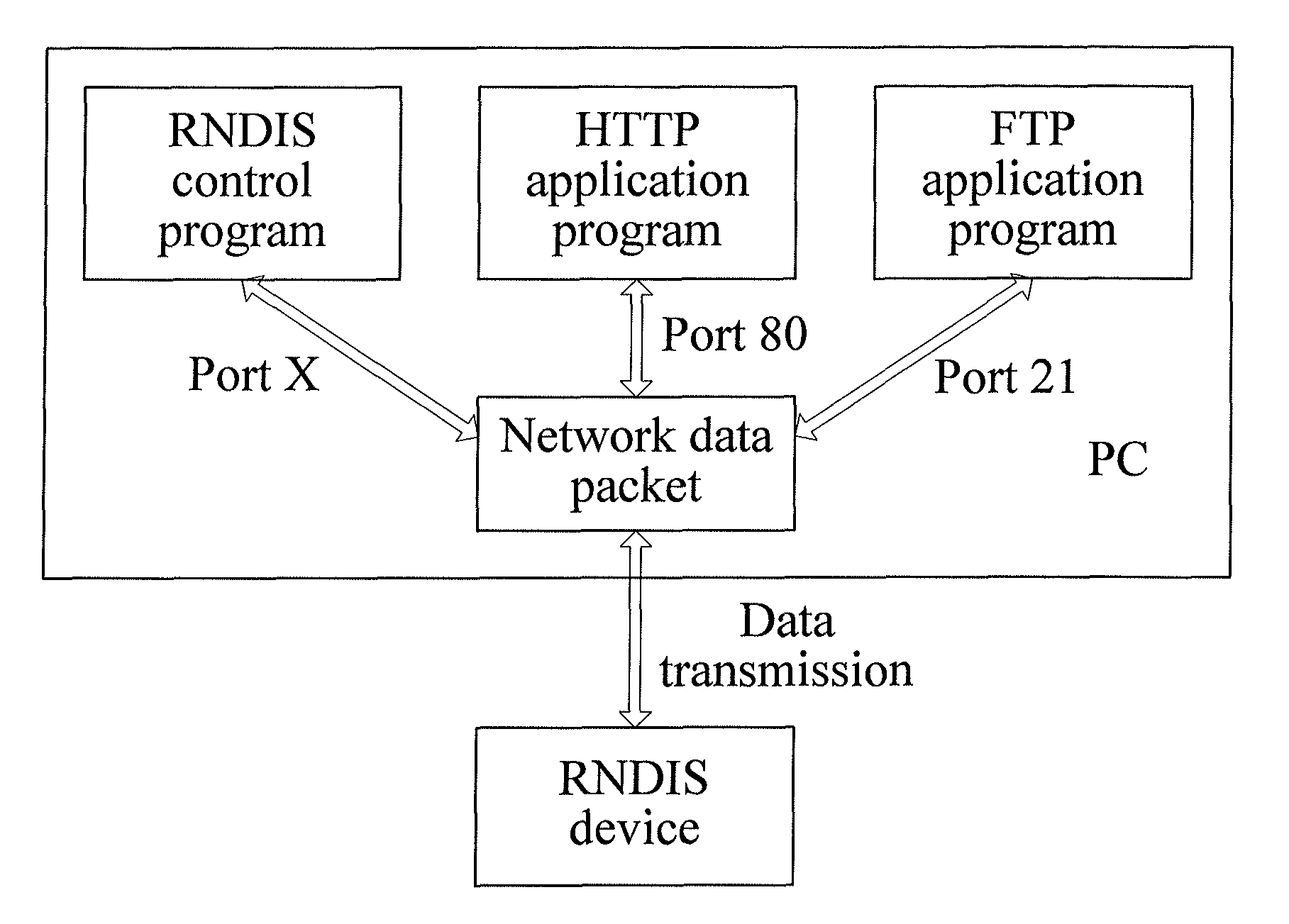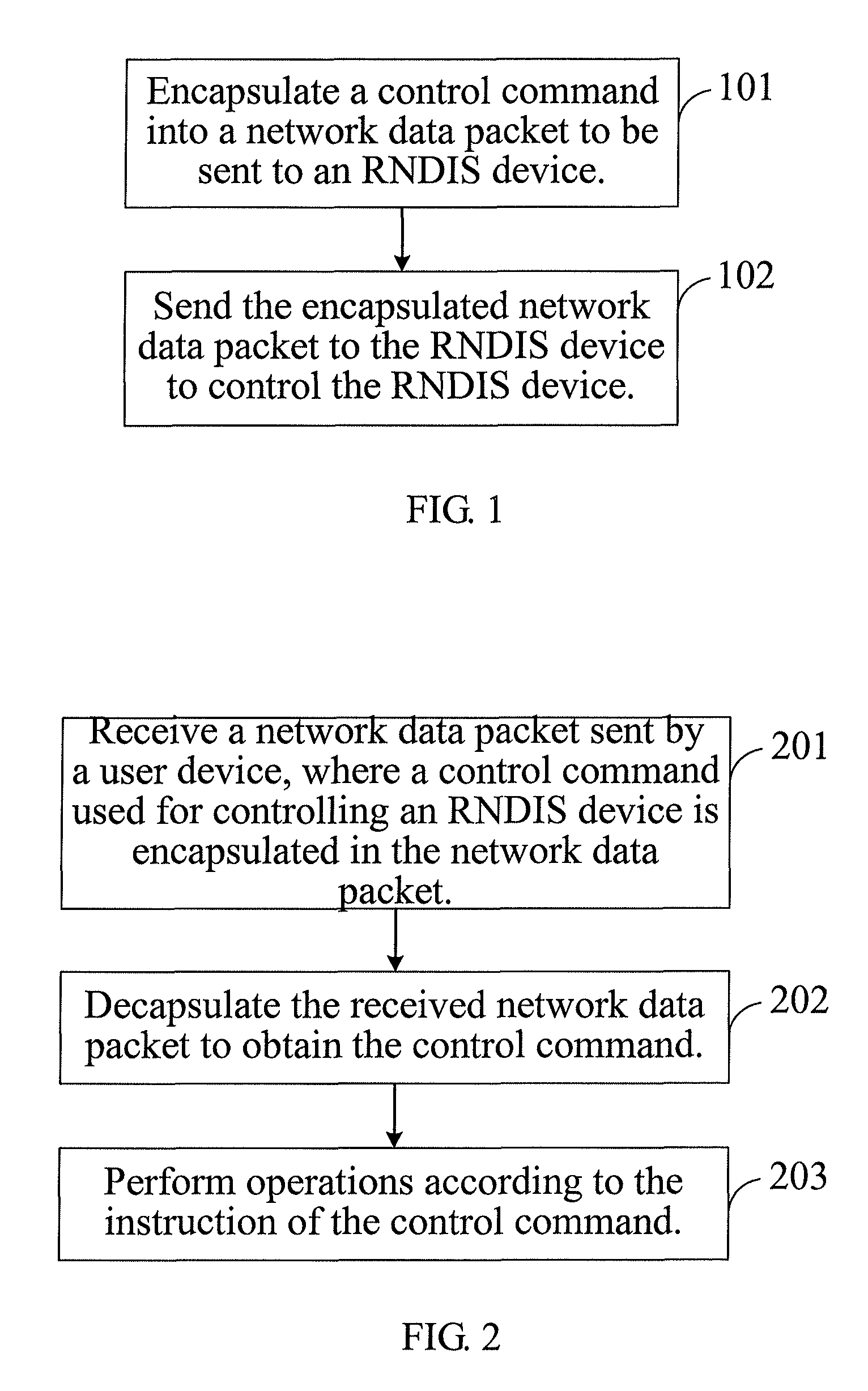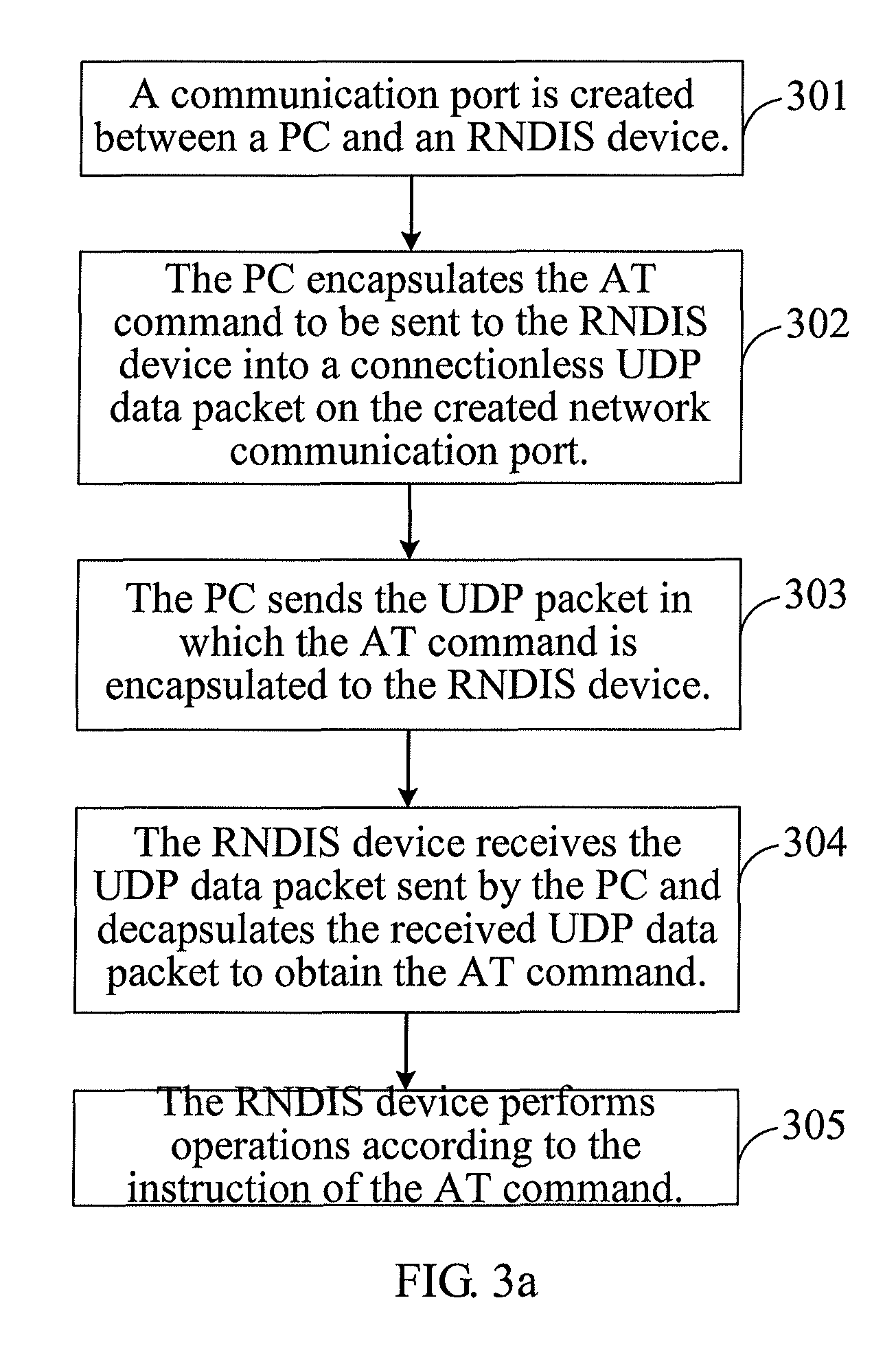Control method, apparatus and system
a control method and control method technology, applied in the field of communication technologies, can solve the problems of inconvenient user operation, inability to transmit control commands of users, and only the driver program of the rndis driver program can transmit network data, so as to reduce the complexity of the application and facilitate implementation
- Summary
- Abstract
- Description
- Claims
- Application Information
AI Technical Summary
Benefits of technology
Problems solved by technology
Method used
Image
Examples
embodiment 1
[0056]This embodiment is described from the aspect of a user device. The user device may be specifically a terminal such as a PC or laptop.
[0057]A control method includes: encapsulating a control command used for controlling an RNDIS device into a network data packet to be sent to an RNDIS device; and sending the encapsulated network data packet to the RNDIS device to control the RNDIS device.
[0058]Referring to FIG. 1, the specific process may be as follows.
[0059]101: The control command is encapsulated into the network data packet to be sent to the RNDIS device.
[0060]For example, the control command may be encapsulated into a connection-based Transmission Control Protocol (TCP) data packet to be sent to the RNDIS device; or
[0061]the control command may be encapsulated into a connectionless UDP data packet to be sent to the RNDIS device.
[0062]The control command is used for controlling the RNDIS device. The command may be, for example, an AT command, a diagnose (DIAG) command, or ot...
embodiment 2
[0067]This embodiment is described from the aspect of an RNDIS device. The RNDIS device may be specifically a wireless datacard used on an RNDIS port.
[0068]A control method includes: receiving a network data packet sent by a user device, where a control command used for controlling an RNDIS device is encapsulated in the network data packet; decapsulating the received network data packet to obtain the control command; and performing operations according to the instruction of the control command.
[0069]Referring to FIG. 2, the specific process may be as follows.
[0070]201: The network data packet sent by the user device is received, where a control command used for controlling an RNDIS device is encapsulated in the network data packet. The command may be an AT command, a DIAG command, or other user-defined commands.
[0071]For example, a connection-based TCP data packet sent by the user device may be received, where the control command used for controlling the RNDIS device is encapsulated...
embodiment 3
[0080]According to the methods described in Embodiment 1 and Embodiment 2, the following section uses examples for detailed description.
[0081]In this embodiment, an example that the user device is a PC, the network data packet is a connectionless UDP data packet, and the control command is an AT command is taken.
[0082]Referring to FIG. 3a, the specific process may be as follows.
[0083]301: A network communication port is created between a PC and an RNDIS device, where the network communication port is used for communicating with the RNDIS device, may be any port, but the port number shall not be the same as that of other known applications. For convenience in description, the network communication port is called the port of the RNDIS control program in the embodiments of the present invention.
[0084]For example, referring to FIG. 3b, FIG. 3b is a schematic scenario diagram of communication between a PC and a RNDIS device. It can be seen from FIG. 3b that, a port number of a File Trans...
PUM
 Login to View More
Login to View More Abstract
Description
Claims
Application Information
 Login to View More
Login to View More - R&D
- Intellectual Property
- Life Sciences
- Materials
- Tech Scout
- Unparalleled Data Quality
- Higher Quality Content
- 60% Fewer Hallucinations
Browse by: Latest US Patents, China's latest patents, Technical Efficacy Thesaurus, Application Domain, Technology Topic, Popular Technical Reports.
© 2025 PatSnap. All rights reserved.Legal|Privacy policy|Modern Slavery Act Transparency Statement|Sitemap|About US| Contact US: help@patsnap.com



